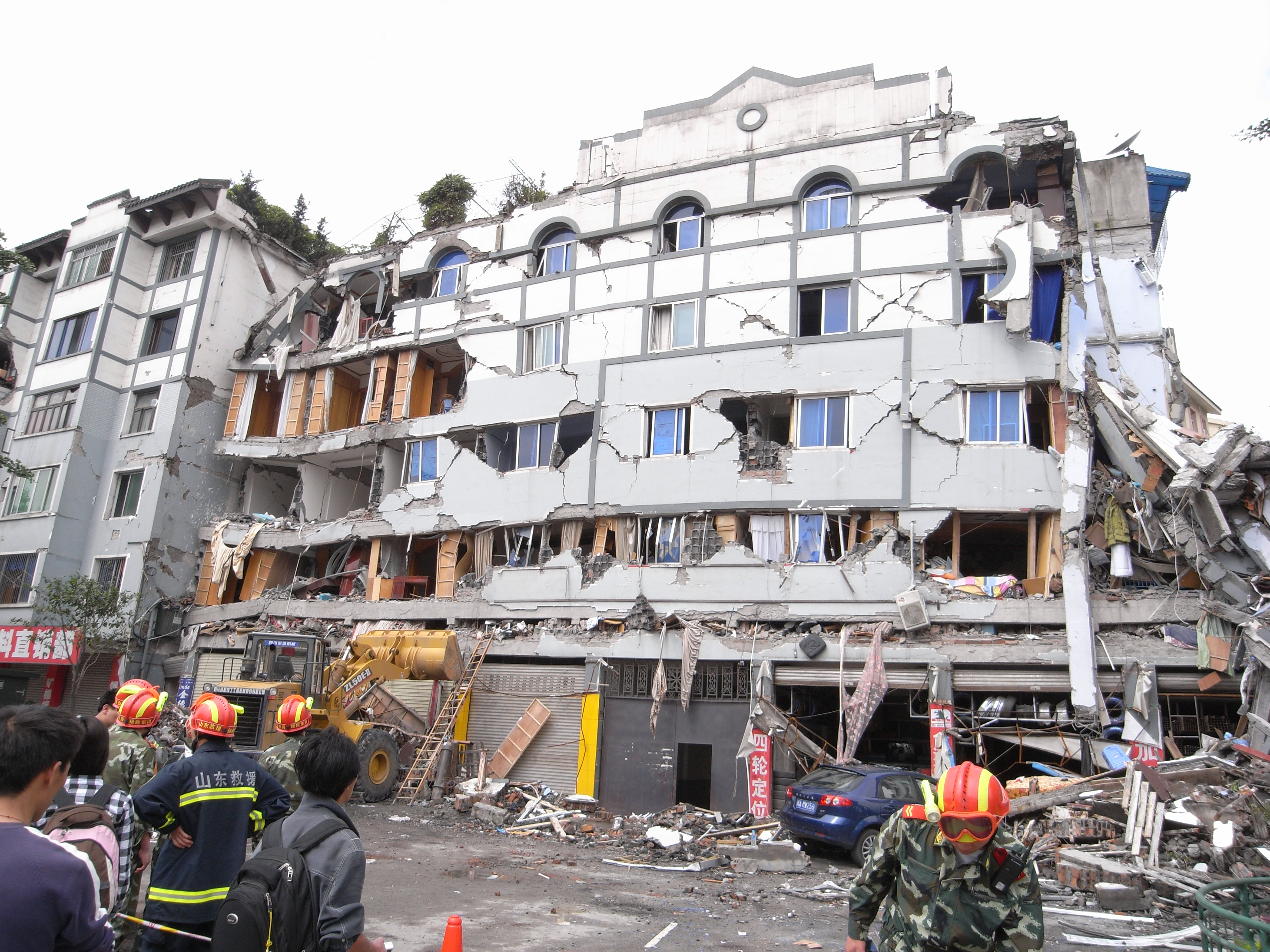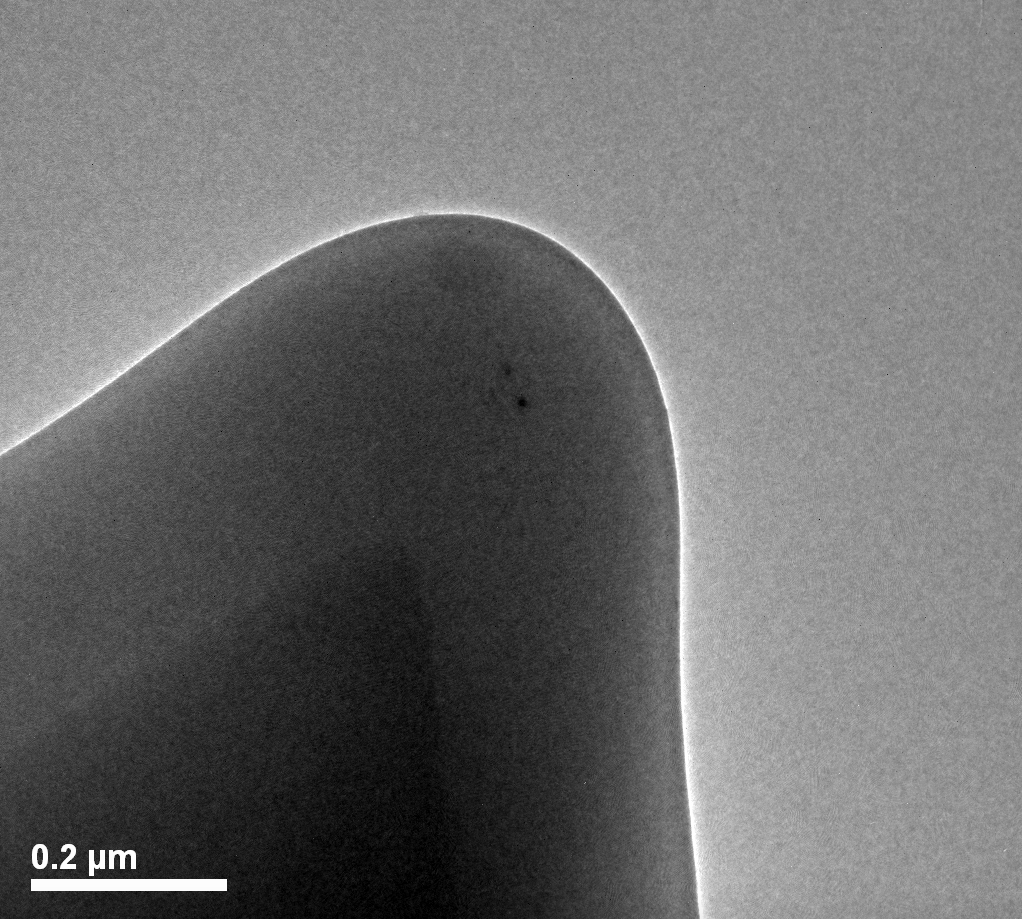
In 2008, Sichuan province in China experienced a massive magnitude-7.9 earthquake caused by the collision of the Indian-Australian and Eurasian plates along the Longmenshan Fault. The earthquake, which has been ranked as the 21st deadliest quake of all time, flattened four-fifths of the structures in the affected area, destroying whole towns and villages and leaving millions of people homeless. Almost 90,000 people were killed.
Kaiwen Tian, who was born and raised in Sichuan, distinctly remembers hearing news of the quake. Although he didn’t personally know anyone who was killed, many people he knew had family or friends who died in the quake. This, Tian says, is a huge part of the reason he decided to study earthquakes.
In collaboration with Robert Carpick and David Goldsby, Tian, who graduated from the University of Pennsylvania in 2017 with a doctorate in physics, recently published a paper in Physical Review Letters which attempts to tackle these devastating natural phenomena by investigating the laws of friction at the smallest possible scale, the nanoscale.
“The big picture here is that friction is a complicated phenomenon,” says Carpick. “We all know it and experience it every day of our lives. It’s important in designing machines, in manufacturing processes, and in all sorts of natural phenomena including earthquakes, which are governed by frictional behavior at geological faults. An earthquake is a sudden slip at the interface between tectonic plates. Static friction is what is resisting that slip. When the stress that has built up in a fault exceeds the stress that friction can resist to prevent motion, you get an earthquake.”
By looking at the nanoscale, the researchers hope to develop fundamental, physically based theories about the underlying laws of friction that lead to earthquakes. Although it’s far down the line, the researchers hope that their research ultimately will enable better predictions about the onset of earthquakes as well as what will happen after they occur.
“Our approach lets us have a small, simple geometry so we know how much material is in contact,” Carpick says. “We can measure the forces occurring under very controlled conditions in our experiments. What we’re trying to do is get at the fundamental friction laws at the nanoscale as a first step toward building fundamental physically based friction laws, first for larger-scale laboratory experiments on rocks and ultimately for earthquake faults.”
Researchers have been trying to understand the friction laws that govern earthquake faults for decades, but the laws they’ve developed thus far are not fundamental laws; they are based mostly on empirical measurements. Although the equations produced by these laws, called rate and state friction laws, fit data from laboratory experiments on sliding rocks, they don’t allow for predictions of what’s going to happen. Researchers need to perform lab experiments to know which coefficients to use in these equations.
“A grand challenge goal for the geophysics community,” Goldsby says, “is to come up with fundamental laws where not only do we know the form of the equations but we know all the coefficients as well: the numerical constants that go into the equation that governs friction.”
The equation for rate and state laws has a rate part, which depends on how fast the materials are sliding, and a state part, which describes how well bonded the interface is. The rates can change if you change the velocity, and the state can change as the history of the sliding progresses.
In this paper, Tian found that, at the nanoscale, the rate and the state are actually not independent of one another as the conventional rate and state friction laws indicate. They’re combined together and interact with each other. This means that the equation, at least for the nanoscale, needs to be modified.
“The state of the interface has an effect on the rate effect in a way that had not been demonstrated before in any other measurements,” says Tian. “In the conventional rate and state friction law for earthquakes, rate and state are treated separately. Our findings show that for silica, one primary component of most rocks and minerals, at the nanoscale, the rate and state phenomena are coupled together. We also show that, at the nanoscale, the meaning of ‘rate’ in the ‘rate effect’ is the rate that we are pulling on the system, rather than the rate it is sliding. This is different from the conventional approach.”
To study this, the researchers used an atomic force microscope (AFM) to investigate bonding strength where two surfaces meet. They used silicon oxide because it is a primary component of many rock materials. Using the small nanoscale tip of the AFM ensures that the interface is composed of a single contact, making it easier to estimate the stresses and contact area.
The scientists brought a nanoscale probe made from silicon oxide into contact with an atomically flat surface of silicon oxide, sliding the tip over the sample, controlling the normal force that they applied, and measured the friction force. They were able to measure how the friction depends on how fast they’re sliding, the load on the probe, and how long they held it still before starting to slide it.
One aspect that sets this research apart from other rock-friction experiments, Tian says, is the fact that they’re working at the nanoscale with a well-defined single contact where they know the applied forces and therefore can estimate fairly accurately the stresses in the contact. They also know exactly how fast they're pulling the tip across the surface and how fast it is actually slipping across the surface as they pull it.
These measurements are difficult to make at the level of individual contact in macroscopic experiments, such as experiments on comparatively large samples, because researchers use average quantities and don't know what the individual stresses are at the individual contacts on the interface.
“That’s the advantage of our approach,” Carpick says. “It also means we have more confidence in the composition of the surfaces. It may change a little bit during our experiment, but we know where we start off in terms of the chemical species that are on the surfaces, and that again is hard to do at the macroscopic scale.”
However, Carpick adds, they’re still very far away from applying what they learn to the macroscale, which is necessary to better understand earthquakes.
“We’re down at the nanoscale,” he says. “The laboratory experiments are at the centimeter scale, and the earthquakes are at the kilometer scale. We have a lot of work to do to try to connect to these larger-scale experiments and phenomena. But our goal is to develop understanding of these nanoscale and molecular-scale mechanisms so that we can then get more insights into the laboratory experiments and ultimately the geological phenomena.”
In addition to leading to better predictions for earthquakes in the future, which in turn might lead to better designs for ameliorating their effects, the research also has implications in other fields, such as nanotechnology. According to Carpick, it could lead to improvements in small-scale nano- and micro-mechanical devices like switches and relays and actuators and in small-scale systems like computer hard drives and nanolithography tools.
“The fact that we see this interaction or coupling between the rate effect and the state effect is new,” Carpick says, “and may help lead to some new ideas and new theories for frictional behavior, not just for geological systems but for other systems as well. There are all sorts of emerging applications where you have small-scale contact, and the insights we're developing could be relevant to those systems as well.”
To follow up on this research, Carpick and Goldsby are currently collaborating with a group at the University of Wisconsin-Madison that is doing atomistic modeling of these experiments to try to provide more insight and validation for the researchers’ interpretation of what they're measuring. They are also working with the group to scale up these results to develop a model of larger-scale interfaces that have multiple contacts. This, Carpick says, is the key next step to applying the knowledge they’re developing toward more practical situations.
“This is a long term goal, and we’re only taking the first few steps,” Goldsby says, “but we’re seeing phenomena that do reflect phenomena seen at larger scales. It’s exciting for us to see and resolve some of the small-scale behavior that we think may contribute in aggregate form to larger-scale system behavior and to actually get some physical insight into it.”
Kaiwen Tian is now a postdoctoral researcher at Cornell University.
Robert Carpick is the John Henry Towne Professor and chair of the Department of Mechanical Engineering and Applied Mechanics in the School of Engineering and Applied Science.
David Goldsby is an associate professor in the Department of Earth and Environmental Science in the School of Arts and Sciences.
This research was supported by the National Science Foundation under grants EAR-1141142, EAR1141882, and EAR 15-50112.








